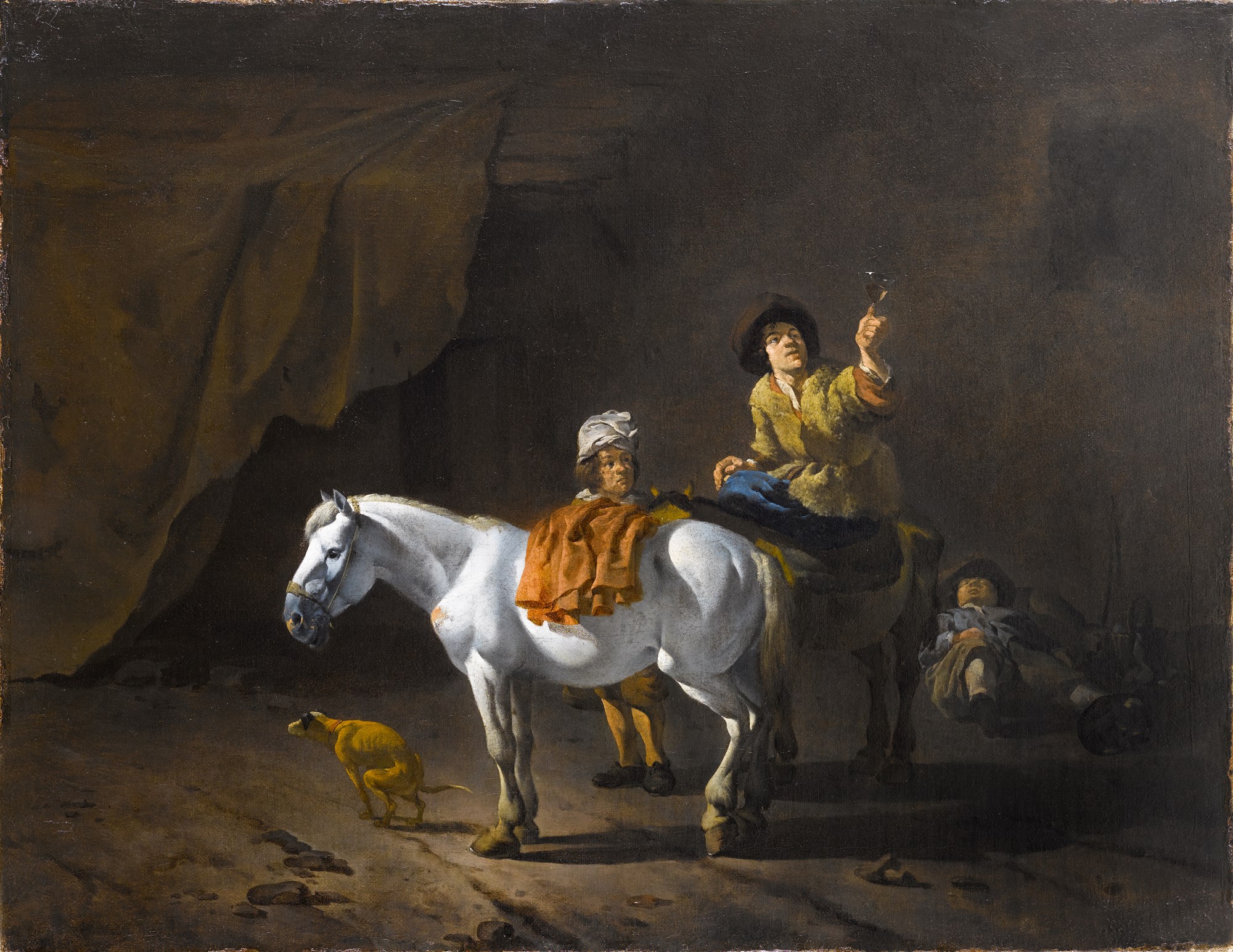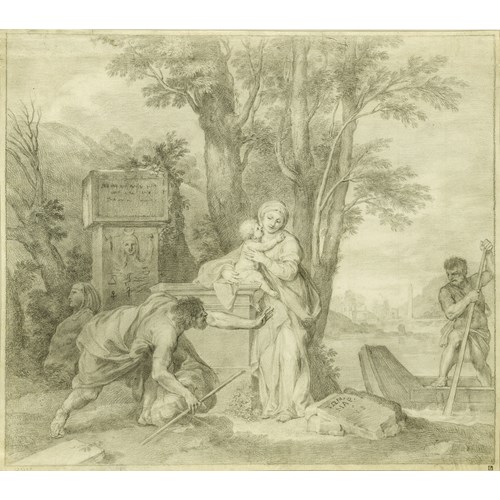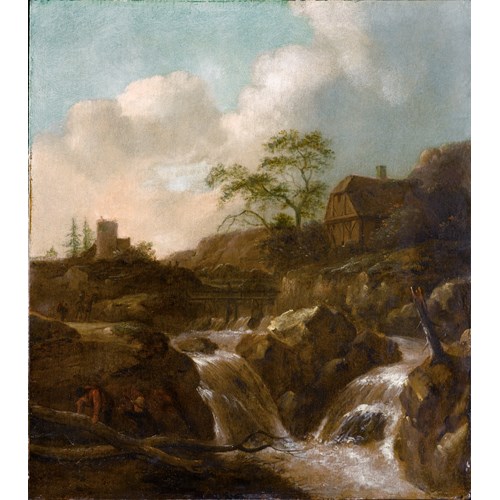Karel Dujardin
A Horseman Holding a Roemer of Wine with an Ostler Tending the Horses
Date 165(6?)
Epoque 1600-1750, 17th century
Origine Italy, The Netherlands
Medium Oil on canvas
Dimension 34.3 x 44.4 cm (13¹/₂ x 17¹/₂ inches)
Such early genre paintings by Dujardin may, in part, have been inspired by what one can imagine to be the colourful scenes that surrounded him as a child. Born in the Ossenmarkt area of Amsterdam, it was the location of the cattle market where Dujardin's father worked. Although Dujardin did not travel to Italy until 1675, the present work shows many of the marks of style of the Bamboccianti painters, a group of which he was a part. Popularised by Pieter van Laer (1599-c.1642), the Bamboccianti were composed of a group of mostly Dutch and Flemish genre painters who worked in Rome, and chose to depict low-life genre scenes relating to contemporary life in Italy. Typically, considerable attention would be paid to the figures and proportionally less to nature and setting, which would normally be offset by a building. This stage-like setting, where the figures become actors within the scene is noticeable in the present work, with the depiction of nature kept to a bare minimum.
The present painting is stylistically similar to a work in the Kunsthalle, Hamburg (inv. no. 180), dated 1658 in which Dujardin employs a similar setting and again use of chiaroscuro. A further work in the Musée Fabre, Montpellier (inv. no. 836-4-15), also dated 1658, shows almost the same composition but reversed.
It has been suggested the Dujardin was a pupil of Nicholaes Berchem (1620-1683), as similarities within Dujardin’s choice of subject matter have been noted, though no evidence exists to support this. Dujardin’s first works are dated to around the mid-1640s, and although it is not known whether Dujardin was an apprentice of Paulus Potter (1625-1654), his influence was considerable on the young artist's career, particularly in his body of work from the 1650s, as seen in his Landscape with Cattle in the Hermitage.
We are grateful to Jennifer M. Kilian for confirming the attribution to Dujardin on the basis of first hand inspection. Although this work was mentioned by Kilian in 2005 under ‘Problematic Attributions’ (see Literature), she had at this point only seen an old photograph. After a more recent inspection, she now considers it to be a genuine work by the artist and dates it to c.1658. A copy is also mentioned, sold at Christie's, New York, 11 January, 1989, lot 5, which is mistakenly reproduced in her book as the present painting.
Date: 165(6?)
Epoque: 1600-1750, 17th century
Origine: Italy, The Netherlands
Medium: Oil on canvas
Signature: Indistinctly signed and dated ‘K: du. Jardin/ 165(6?)’ (centre left).
Dimension: 34.3 x 44.4 cm (13¹/₂ x 17¹/₂ inches)
Provenance: Oscar Nottebohm, Antwerp, before 1935;
with Castendijk, Rotterdam, by 1966;
from whom bought by the previous private collection, Oosterbeek, The Netherlands.
Literature: C. Hofstede de Groot, Beschreibendes und kritisches Verzeichnis der Werke..., vol. IX, Esslingen/Paris 1926, p. 379, no. 311;
E. Brochhagen, Karel Dujardin. Ein Beitrag zum Italianismus in Holland im 17. Jahrhundert, dissertation, University of Cologne 1958, p. 57;
J.M. Kilian, The Paintings of Karel du Jardin 1626-1678, Amsterdam/Philadelphia 2005, p. 233, cat. no. B 27, reproduced plate 154 (under Problematic Attributions and wrongly reproduced. Having since seen the picture in the original Jennifer Kilian has revised her opinion, see note below for details).
Exhibition: Antwerp, Koninklijk Museum voor Schone Kunsten, Tentoonstelling van kunstwerken uit Antwerpsche Verzamelingen. Tweede reeks, 10 August - 22 September 1935, p. 57, cat. no. 198;
Rotterdam, C.P.A. and G.R. Castendijk, Tentoonstelling van Oude Meesters, 16 April - 8 May 1966, cat. no. 11, reproduced fig. 4 (as dated 1647).
Plus d'œuvres d'art de la Galerie









